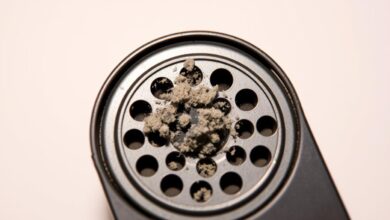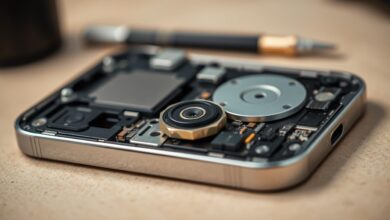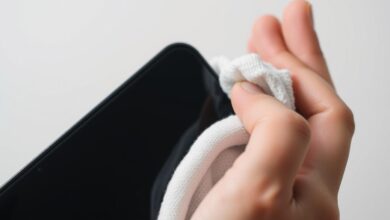how to eject water from iphone
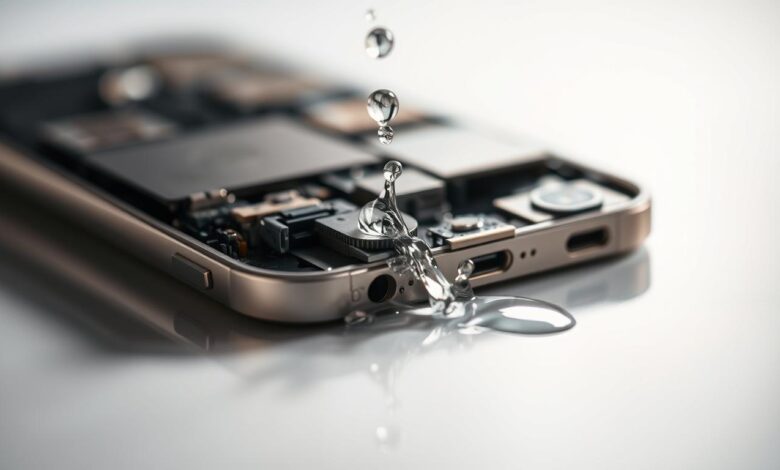
I’ve felt the shock of dropping my iPhone in water. It’s a common mishap that can strike anyone. Prompt action is key to lessen the damage.
Water and electronics don’t get along, and iPhones are no different. If your phone has been in water, you must act fast. This helps avoid corrosion and other damage.
Removing water from your iPhone is a careful process. In this article, I’ll guide you on how to reduce water damage. You might even save your device.
Key Takeaways
- Act quickly to minimize water damage to your iPhone.
- Understand the risks associated with water exposure.
- Learn the steps to remove water from your iPhone.
- Discover methods to dry out your device.
- Prevent future accidents with simple precautions.
Understanding Water Damage on iPhones
Water damage is a common problem for iPhone users. It’s important to know how it affects your device. This damage can happen if your iPhone falls into water or gets wet in the rain.
To understand water damage, knowing your iPhone’s water resistance is key.
iPhone Water Resistance Ratings by Model
Each iPhone model has a different water resistance level. This is shown by its IP (Ingress Protection) rating. Knowing this rating helps you understand how well your iPhone can handle water.
IP67 vs. IP68 Ratings Explained
An IP67 rating means your iPhone can handle being underwater up to 1 meter for 30 minutes. But, an IP68 rating lets your iPhone go up to 4 meters for the same time. For example, the iPhone 13 has an IP68 rating, making it more resistant to water damage.
Water Resistance Limitations
Even with IP ratings, your iPhone is not completely safe from water. Over time, the water resistance can wear off. It’s also important to remember that these ratings don’t mean your iPhone can’t get damaged by water. As OS X Daily points out, acting fast is crucial if your iPhone gets wet.
What Happens When Water Gets Inside Your iPhone
Water inside your iPhone can seriously harm its internal parts. Knowing where water can get in and how it can damage your phone is important to minimize the damage.
Common Entry Points for Water
Water usually gets into your iPhone through the charging port, SIM card slot, or speaker grills. Using waterproof cases or covers can help keep these areas dry.
Potential Component Damage
Once water gets in, it can damage your phone’s internal parts. This can cause malfunctions or even make your phone stop working. It’s crucial to act quickly if your iPhone gets wet to avoid this damage.
Immediate Actions When Your iPhone Gets Wet
When your iPhone gets wet, every second matters. Quick action can greatly lower damage risks.
Power Off Your iPhone Immediately
The first thing to do is turn off your iPhone. This stops short circuits that could harm it more.
Safe Shutdown Procedure
To safely shut down, press and hold the sleep/wake button. Wait for the “slide to power off” slider to show. Then, slide it to the right. This step avoids electrical shorts.
When Force Restart Is Necessary
If your iPhone won’t respond, you might need to force restart it. For iPhone 8 and later, press volume up and down quickly. Then, hold the side button until you see the Apple logo.
Remove Case, SIM Tray, and Accessories
Take off any cases, SIM trays, or accessories. This helps your iPhone dry faster and protects these parts. Be careful when removing the SIM tray to avoid damage.
Properly Wipe External Moisture
Use a soft, lint-free cloth to wipe your iPhone. This removes visible moisture.
Recommended Drying Materials
A microfiber cloth is best for drying without scratching. Stay away from paper towels or other rough materials.
Areas That Need Special Attention
Focus on ports and buttons, as water can get in there. Use a soft-bristled brush or cotton swab to dry these spots gently.
By taking these quick steps, you can greatly improve your iPhone’s chances of recovery. Quick and careful action is crucial in fixing water damage or getting rid of water stuck in your iPhone.
How to Eject Water from iPhone Using Built-in Features
Knowing how to use your iPhone’s water ejection features can save your device from water damage. The iPhone has special features to protect it from water. It’s important to know how to use them right.
Understanding the iPhone’s Water Detection System
The iPhone’s water detection system is very smart. It knows when your device has been in water. This system starts protective actions to keep your iPhone safe.
How iPhones Detect Water Presence
iPhones find water through sensors in ports like the charging port. These sensors feel moisture and start protective actions.
Automatic Protection Mechanisms
When water is detected, the iPhone stops some functions to avoid damage. This quick action helps protect the inside of your iPhone.
Using the Water Eject Shortcut
The Water Eject shortcut is a handy feature. It uses sound to push water out of your iPhone’s speakers. This can help get rid of water in your device.
How the Shortcut Uses Sound Frequencies
The Water Eject shortcut plays special sounds. These sounds make the water vibrate out of the speakers. It’s a good way to remove water from the speaker grills.
Step-by-Step Setup Instructions
To set up the Water Eject shortcut, follow these steps:
- Open the Shortcuts app on your iPhone.
- Tap on the “+” icon to create a new shortcut.
- Search for “Water Eject” in the search bar and select the Water Eject action.
- Tap “Next” and then “Done” to save the shortcut.
- To run the shortcut, go to the Shortcuts app, find the Water Eject shortcut, and tap on it.
Here’s a summary of the steps and their outcomes in a tabular format:
| Step | Description | Outcome |
|---|---|---|
| 1 | Open Shortcuts app | Access to shortcut creation |
| 2 | Create new shortcut | Begin setup process |
| 3 | Search for “Water Eject” | Locate the Water Eject action |
| 4 | Save the shortcut | Shortcut is ready for use |
| 5 | Run the shortcut | Water is ejected from the iPhone |
Using Third-Party Apps to Remove Water
Third-party apps can help remove water from your iPhone. They are popular for fixing water damage. These apps offer a quick way to try and dry out your device.
Top Water Ejection Apps for iPhone
Many apps claim to remove water from iPhones. They work in different ways, with some using sound waves to push out water.
Free vs. Paid Options
Choosing a water ejection app means deciding between free and paid options. Free apps have basic features. Paid apps offer more advanced tools and might work better. It’s important to check how well these apps work and what others say about them.
App Effectiveness Comparison
It’s hard to compare water ejection apps because results vary. Yet, some apps get good reviews for using sound waves to remove water.
How These Apps Generate Sound Waves
These apps work by creating sound frequencies. These frequencies make vibrations that help push water out of the iPhone’s speakers and openings.
Science Behind Water Ejection
The idea is to use sound waves to create vibrations. These vibrations can help get rid of water in some iPhone areas.
Optimal Volume and Duration Settings
To get the best results, adjust the volume and duration as the app suggests. 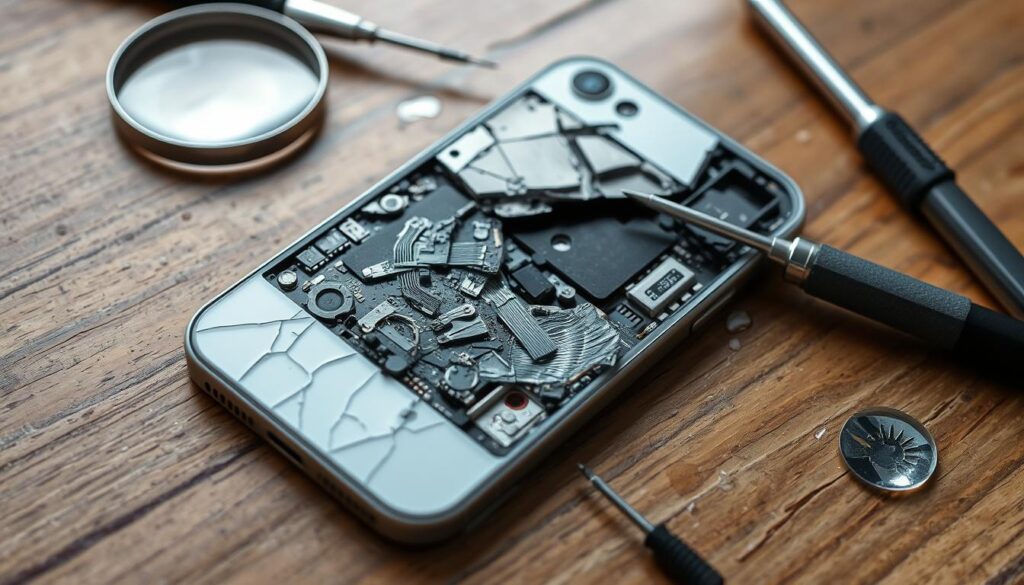
It’s key to follow the app’s instructions. This helps avoid damaging your iPhone’s speakers or other parts.
Manual Methods to Remove Water from iPhone
To fix water damage on your iPhone, you can try several manual drying methods. These methods can help remove water from your iPhone. But, it’s important to know their limits and risks.
The Rice Method: Myths and Facts
The rice method is a common DIY way to dry a wet iPhone. You put the device in a container of uncooked rice to soak up the moisture.
Why Rice Has Limited Effectiveness
Rice isn’t as good as other drying agents because it can leave dust and starch. This can harm your iPhone’s inside parts.
Better Alternatives to Rice
Instead of rice, use silica gel packets or desiccants. They absorb moisture better without leaving any residue.
Using Silica Gel and Desiccants
Silica gel and other desiccants are great at pulling out moisture. Place your iPhone in a container with these materials to dry it.
Proper Air Drying Techniques
Air drying is another way to get water out of your iPhone. Let the device sit in a dry place, letting the water evaporate on its own.
Optimal Environmental Conditions
For air drying to work well, your iPhone needs to be in a cool, dry spot. Keep it away from sunlight and heat.
Drying Duration Guidelines
The time it takes to dry depends on how much water was in your iPhone. It’s best to let it dry for 48 to 72 hours.
| Drying Method | Effectiveness | Precautions |
|---|---|---|
| Rice Method | Limited | May leave residue |
| Silica Gel/Desiccants | High | Ensure complete dryness before use |
| Air Drying | Moderate | Avoid heat sources and direct sunlight |
Removing Water from Specific iPhone Components
It’s important to remove water from iPhone parts to avoid damage. Water can harm speakers, charging ports, microphones, and buttons. This can lead to problems like distorted sound or even component failure.
Clearing Water from iPhone Speakers
Water in the iPhone speaker can make sound muffled or distorted. There are ways to fix this.
Speaker Grill Cleaning Techniques
To clean the speaker grill, use a soft-bristled brush or cotton swab. This removes debris and water. Be careful not to push too hard, which could damage the mesh.
For a deeper clean, use a small amount of isopropyl alcohol on a cotton swab. But do it carefully to avoid letting liquid in.
Testing Speaker Functionality
After cleaning, play music or a video to test the speaker. If sound is still bad, you might need to clean it again or get help. For more tips, check ifixit.
Dealing with Water in Charging Ports
Water in the charging port can stop your iPhone from charging. It’s key to dry the port carefully to avoid harm.
Safe Drying Methods for Lightning/USB-C Ports
To dry the charging port, turn off your iPhone and pat the outside dry with a soft cloth. Don’t use heat like hair dryers, as it can damage more. Instead, let it air dry or use a desiccant to soak up moisture.
When to Use Isopropyl Alcohol
Isopropyl alcohol can clean corrosion from charging port contacts. But use it carefully to avoid harming internal parts. Dampen a cotton swab with alcohol and gently clean the contacts. Then, let it dry completely before trying to charge your iPhone.
Addressing Water in Microphones and Buttons
Water in microphones and buttons can mess with call quality and device function. Gently tap the affected area against your hand to remove excess water. Then, let it air dry. If problems persist, you might need professional repair.
What Not to Do When Your iPhone Has Water Damage
Water damage can be really bad for your iPhone. It’s just as important to know what not to do as it is to know what to do. When your iPhone gets wet, what you do right after can really affect if you can fix it. Avoiding common mistakes can help keep your water damaged iphone from getting worse.
Avoid Heat Sources and Hair Dryers
Many people make the mistake of using heat or hair dryers to dry their wet iPhone. This can dry the water fast, but it can also hurt the inside of your phone. It’s better to let your iPhone dry on its own without using heat.
Don’t Charge Your Wet iPhone
Charging a wet iPhone can be very dangerous. Water and electricity together can cause short circuits that can really hurt your phone.
Charging Risks After Water Exposure
When your iPhone gets wet, the charging port is especially at risk. Charging it can push water into the port, making damage more likely.
When It’s Safe to Charge Again
You can safely charge your iPhone again once you’re sure it’s dry. This might take a few hours or even days, depending on how wet it was.
Skip These Harmful “Solutions”
Some fixes people try for a water-damaged iPhone can actually make things worse. Avoid using compressed air, shaking, or tapping your device.
Compressed Air Dangers
Compressed air can push water deeper into your iPhone, causing more harm.
Shaking and Tapping Risks
Shaking or tapping your iPhone can also cause damage. It can knock loose internal parts and push water deeper into the device.
| Action to Avoid | Potential Damage |
|---|---|
| Using heat sources or hair dryers | Damage to internal components |
| Charging a wet iPhone | Short circuits and irreparable damage |
| Using compressed air | Pushing water further into the device |
| Shaking or tapping the iPhone | Dislodging internal components and causing further damage |
How to Check for Water Damage on Your iPhone
After your iPhone gets wet, checking for water damage is key. Water damage can cause corrosion and harm your device’s parts. This can make your iPhone unusable. So, it’s important to inspect it carefully.
Locating the Liquid Contact Indicator (LCI)
The Liquid Contact Indicator (LCI) on iPhones shows if your device has been wet. It’s a small sticker that changes color when it meets liquid.
LCI Locations by iPhone Model
The LCI’s spot changes with each iPhone model. For iPhone 12 and later, it’s inside the SIM tray. Older models might have it on the logic board or near the charging port. Always check your iPhone’s manual for the exact spot.
Interpreting LCI Color Changes
The LCI is white or silver when dry. It turns red or pink if it’s wet. If it’s changed color, your iPhone has been wet. But, not all water damage shows up this way.
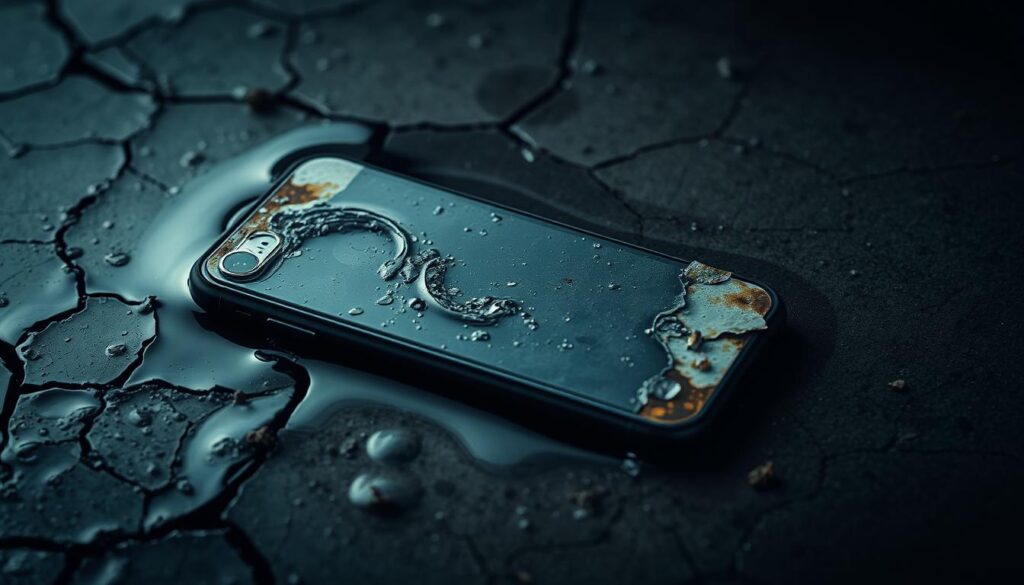
Signs of Internal Water Damage
There are other signs of water damage besides the LCI. Look for visual signs and functional issues.
Visual Indicators on Screen and Body
Water damage can leave water spots or corrosion. Check your iPhone’s screen and body for these signs.
Functional Issues That Suggest Water Damage
Functional problems can also point to water damage. Issues like a broken touchscreen or distorted audio are signs. If you notice these, your iPhone might need iphone water damage repair.
In summary, to check for water damage, look at the LCI and watch for signs of internal damage. If you think your iPhone has been damaged, get it checked by a pro for iphone water damage repair to avoid more harm.
Different Water Exposure Scenarios
Water damage to iPhones can happen in many ways. Each situation has its own challenges. Knowing these differences helps us fix the problem better.
iPhone Dropped in Fresh Water (Pool, Sink, Toilet)
Exposure to fresh water can be less damaging than other liquids. But, it’s important to act fast to lessen the harm.
Fresh water is less conductive than salt water. Still, it can cause harm if not treated quickly. Use your iPhone’s water ejection features or third-party apps to fix it.
Salt Water Exposure (Beach, Ocean)
Salt water is more harmful to your iPhone because it’s corrosive. Salt can damage your device over time. So, clean and dry it well.
Why Salt Water Is More Damaging
Salt water is worse because it conducts electricity better than fresh water. This can lead to short circuits. Salt can also corrode your iPhone’s parts.
Special Steps for Salt Water Exposure
For salt water damage, rinse your iPhone with fresh water. Then, dry it completely. Using a desiccant or silica gel can help dry it out.
Other Liquids (Coffee, Soda, Juice)
Liquids like coffee, soda, or juice can be tough to deal with. They leave sticky residues and can corrode your iPhone.
Dealing with Sticky Residues
To clean sticky residues, use a soft cloth or brush. Don’t use harsh chemicals that could harm your iPhone.
Addressing Potential Corrosion
Corrosion is a big problem with some liquids. Check your iPhone’s parts often. If you see damage, get professional help to avoid more harm.
When to Seek Professional Help
When your iPhone gets wet, knowing when to get help is important. Water damage can be too much for DIY fixes. Trying to fix it yourself might make things worse.
If you’ve tried to get water out with built-in tools or apps but still have problems, it’s time for a pro.
Apple Store vs. Third-Party Repair Services
Choosing where to take your wet iPhone is a big decision. You can go to the Apple Store or a third-party repair service. Each has its own advantages and disadvantages.
Cost Comparison
Cost is a big factor in your choice. Here’s a look at the prices:
| Service | Average Cost | Warranty |
|---|---|---|
| Apple Store Repair | $299-$399 | Yes |
| Third-Party Repair | $150-$300 | Varies |
Repair Timeframes
How long the repair takes is also important. Here’s a comparison:
| Service | Average Timeframe |
|---|---|
| Apple Store | 1-5 days |
| Third-Party | Same day – 3 days |
What to Expect from Professional Water Damage Repair
Knowing what happens during repair can help you understand the process. Professionals will check and fix your iPhone thoroughly.
Diagnostic Procedures
First, experts will figure out how bad the water damage is. They use special tools and methods for this.
Component Replacement Options
If parts can’t be fixed, they’ll be replaced. This might include the logic board, battery, or other key parts.
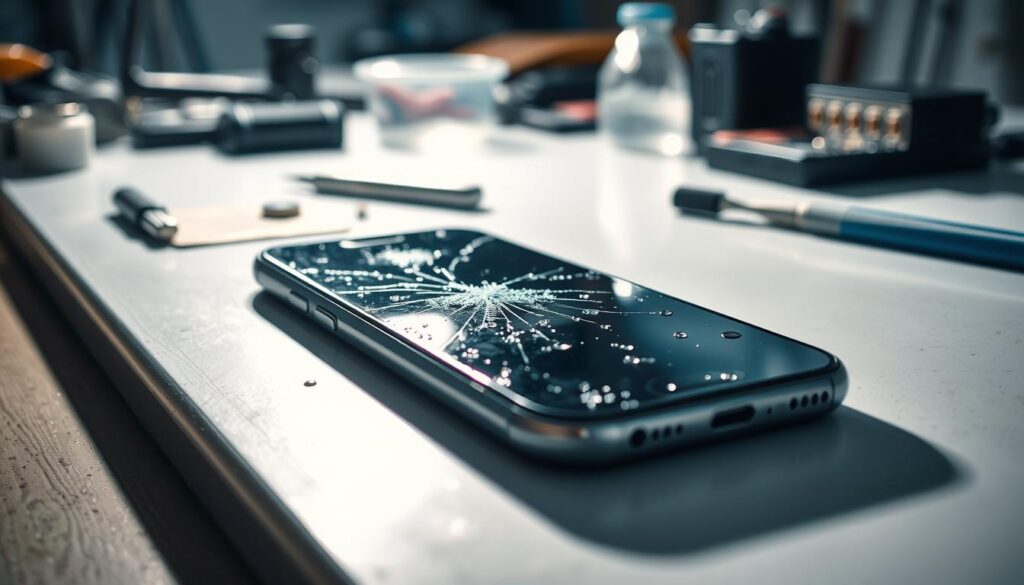
iPhone Water Damage and Warranty Coverage
Understanding your warranty options is crucial when your iPhone gets wet. The coverage you get depends on your warranty or insurance plan.
Does AppleCare+ Cover Water Damage?
AppleCare+ is an extended warranty from Apple. It offers extra protection beyond the standard warranty. It covers up to two incidents of damage, including water damage, for a service fee.
Coverage Limitations and Deductibles
AppleCare+ provides great protection, but it has limits. There’s a deductible for each water damage incident. This means you’ll have to pay a certain amount for repairs or a new phone.
AppleCare+ vs. Standard Warranty
The standard Apple warranty doesn’t cover water damage. If your iPhone gets wet and you don’t have AppleCare+, you might have to pay for repairs or a new phone yourself.
Third-Party Insurance Options
There are also third-party insurance options for water damage. These include carrier insurance and credit card protection plans.
Carrier Insurance Programs
Many carriers offer insurance for accidental damage, including water damage. These plans vary in coverage and cost.
Credit Card Protection Plans
Some credit cards offer protection for damaged or lost devices. Check if your credit card has such a plan.
Long-Term Effects of Water Damage
Water can cause hidden problems in your iPhone. It’s important to know these effects to fix them.
Corrosion and Component Failure Timeline
Corrosion is a big threat to your iPhone after water damage. The time it takes for corrosion and failure depends on the water amount and how long it was exposed.
Early vs. Late-Appearing Damage
Water damage can show up right away or later. For example, corrosion can start quickly but may take months to cause problems.
Most Vulnerable Components
The logic board, battery, and connectors are most at risk. These parts are key to your iPhone’s function. Damage to them can cause big problems.
Battery and Performance Issues After Water Exposure
Water damage can hurt your iPhone’s battery and performance. Corrosion can lead to battery life issues and system failures.
Battery Capacity Degradation
Water can also reduce your battery’s capacity. It damages the battery’s chemistry, shortening its life and reducing its power.
Processing and Connectivity Problems
Water damage can cause problems with processing and connectivity. Corrosion on the logic board can affect your iPhone’s performance, Wi-Fi, and more.
Fixing water damage quickly is key to avoiding long-term problems. If your iPhone got wet, getting iphone water damage repair help is a smart move to prevent more damage.
Preventing Future Water Damage
Knowing how to eject water from iPhone is key. But, it’s also crucial to take steps to prevent water damage in the future.
Waterproof Cases and Accessories
Getting a waterproof case is a smart move to protect your iPhone. These cases act as a shield, keeping your device safe from water.
Case Ratings and Reliability
When picking a waterproof case, check its IP rating. The IP rating shows how well a case guards against dust and water. For example, an IP68 rating means it’s very protective.
Best Waterproof Accessories
There are more than just cases to keep your iPhone safe. Screen protectors and pouches offer extra protection, especially in wet places.
| Accessory | Protection Level | Price Range |
|---|---|---|
| Waterproof Case | IP68 | $20-$50 |
| Screen Protector | Water-resistant | $10-$30 |
| Waterproof Pouch | Submersible | $15-$40 |
Situations and Environments to Avoid
Being aware of your surroundings can help avoid water damage to your iPhone.
High-Risk Activities
Swimming, surfing, or showering with your iPhone can be risky. It’s best to keep your device away from water or use a waterproof pouch.
Weather Considerations
Heavy rain or high humidity can also be a problem. A waterproof case or cover can keep your iPhone safe in these conditions.
Conclusion
Dealing with water on your iPhone can be really stressful. It’s important to act fast to protect your device. We’ve looked at ways to get water out, like built-in tools, apps, and manual methods.
Fixing water damage on your iPhone means acting quickly. Turn it off, remove accessories, and use the water eject shortcut. For worse cases, apps or methods like rice or silica gel can help.
If your iPhone got wet, you need to check it and fix it right away. Knowing how to prevent damage, like using waterproof cases, is key. This keeps your iPhone in good shape.
Being ready and informed helps avoid water damage risks. Whether your iPhone got wet or you want to prevent it, knowing how to act is crucial. Stay prepared and know how to handle water damage.
FAQ
How do I eject water from my iPhone?
You can use the Water Eject shortcut on your iPhone or apps that make sound waves. These methods help remove water.
What should I do immediately after my iPhone gets wet?
First, turn off your iPhone. Then, take off any accessories. Use a soft cloth to wipe away moisture gently.
Can I charge my iPhone after it’s been exposed to water?
No, don’t charge your iPhone until it’s dry. Charging wet can cause short circuits and damage.
How can I check if my iPhone has water damage?
Look for the Liquid Contact Indicator (LCI) in your SIM card tray. If it’s red or pink, your iPhone has been wet.
Will AppleCare+ cover water damage to my iPhone?
AppleCare+ does cover water damage, but you might have to pay a fee. Check your AppleCare+ details for specifics.
How can I prevent water damage to my iPhone in the future?
Use a waterproof case and avoid wet places. Also, think about getting third-party insurance for extra protection.
What are the long-term effects of water damage on my iPhone?
Water damage can cause corrosion, component failure, and battery issues. It might make your iPhone not work right.
Can I fix water damage on my iPhone myself?
You can try drying your iPhone and using water ejection methods. But, serious damage might need a pro to fix.
Are there any third-party apps that can help remove water from my iPhone?
Yes, some apps use sound waves to remove water. But, be careful and check if the app works well.
Is it safe to use a hair dryer or heat source to dry my iPhone?
No, heat can harm your iPhone’s parts. Let it air dry or use desiccants instead.
How do I clean water from my iPhone’s speakers?
Gently clean the speaker grills with a soft brush or cloth. Use a water ejection shortcut or app for the speakers.
What should I do if my iPhone has been exposed to salt water?
Rinse your iPhone with fresh water to get rid of salt. Then, dry it well. Salt water is very damaging.
